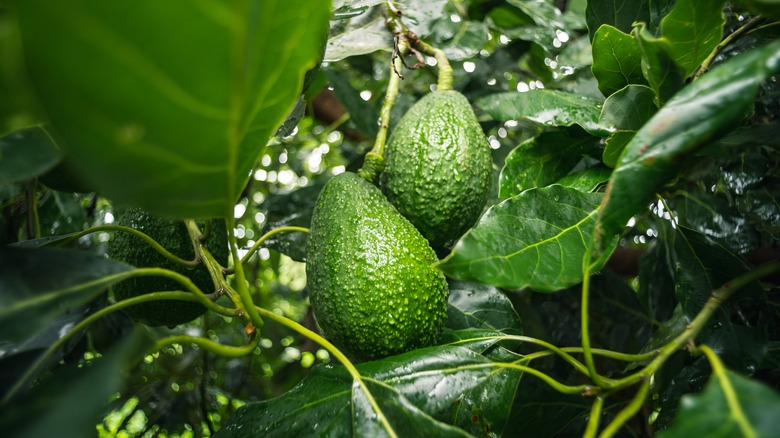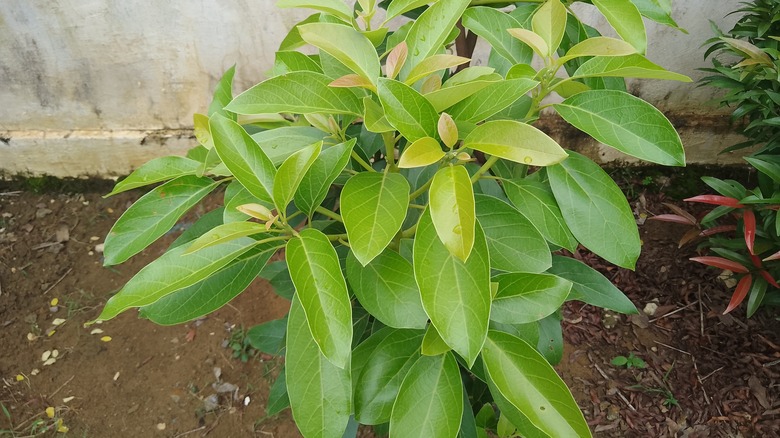Fall Fertilizer Tips You Should Follow For Avocado Trees
Growing your own avocado tree can be highly rewarding, even saving you some money when avocados are expensive to buy at the grocery store. Still, if you're growing one or more avocado trees in your garden, you should be aware that these trees are a subtropical species that don't naturally go dormant over the winter. Avocado trees, like other subtropical trees, do, however, experience a winter resting period known as quiescence, which helps protect them from frost damage during winter. That's why applying the right fertilizer in the fall is important. You don't want to encourage a growth flush, but you still must provide your trees with nutrients, like magnesium, zinc, and sulfur, to help them survive the winter and produce lots of tasty fruits in summer.
Essentially, avocado trees enter into a quiescent state after temperatures have dropped to less than 50 degrees Fahrenheit, and they do this more readily when they're not putting on any new growth, commonly known as flushing. What generally causes flushing is pruning and high-nitrogen fertilizers. So, these are things you want to avoid in the fall if you want your tree to survive through the winter and remain healthy. That's also why the best time of year to prune fruit trees like avocados is in spring.
How to give your avocado tree the right nutrients in the fall
Apart from the major nutrients of nitrogen, phosphorus, and potassium, avocado trees also need zinc and magnesium, as well as iron. These micronutrients can be bound up in the soil if it's highly alkaline, making them unavailable to the tree. So, while you want to avoid adding a balanced fertilizer in the fall that contains nitrogen, you should help your avocado tree survive its winter resting period by using a natural mineral known as langbeinite, containing potassium, magnesium, and sulfur, as well as trace amounts of iron.
The potassium in this product is helpful to replace the potassium lost when the fruit is harvested. This vital nutrient can also help the tree survive the winter as well as improve the quality of the fruit in summer. Magnesium is needed for the production of chlorophyll in plants. You can typically spot a magnesium deficiency on trees' leaves with signs of yellowing but bright green veins. Lastly, sulfur is important to help avocado trees take up the necessary iron and zinc from alkaline soils with a pH above 7. So, if you follow these tips to get your avocado trees through the winter and then use a fertilizer that contains adequate nitrogen in the spring, as well as other tips to make avocado trees produce more fruit, your tree should flourish.

